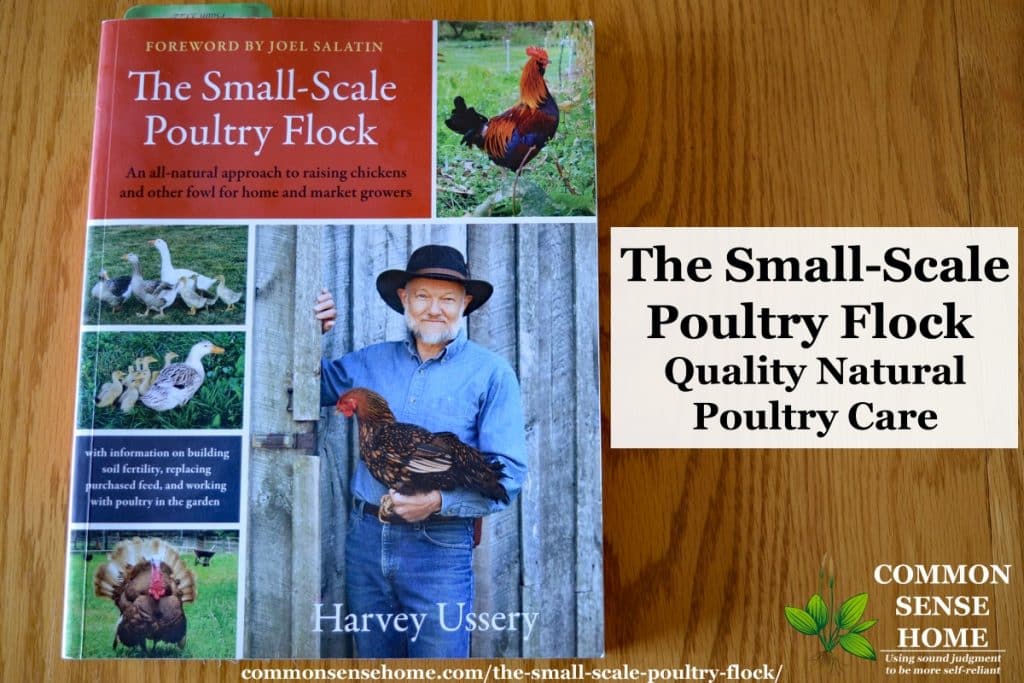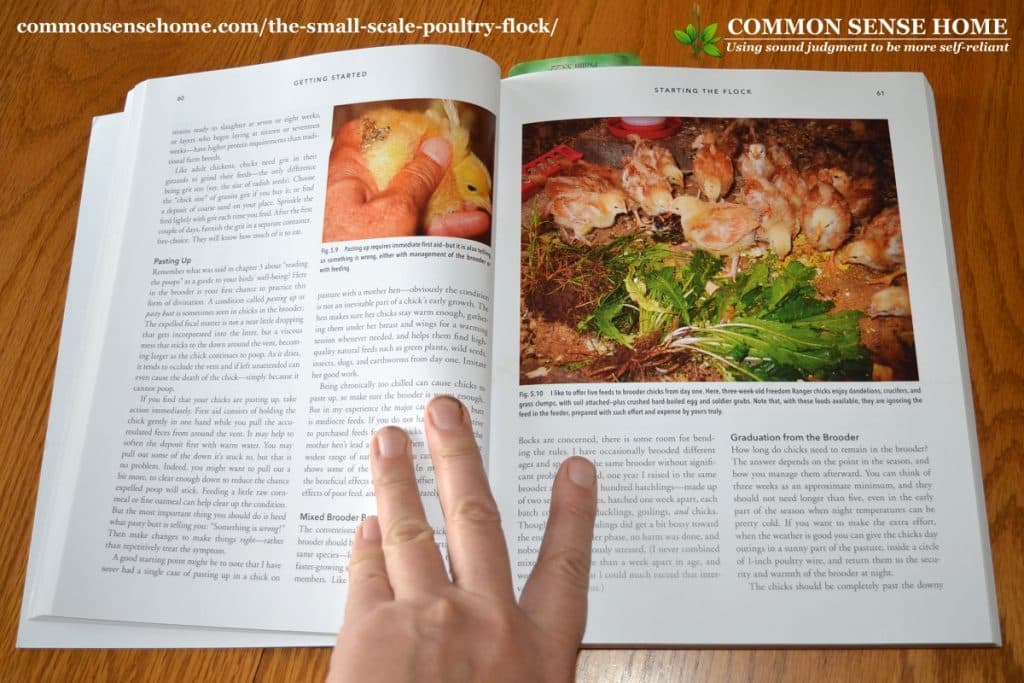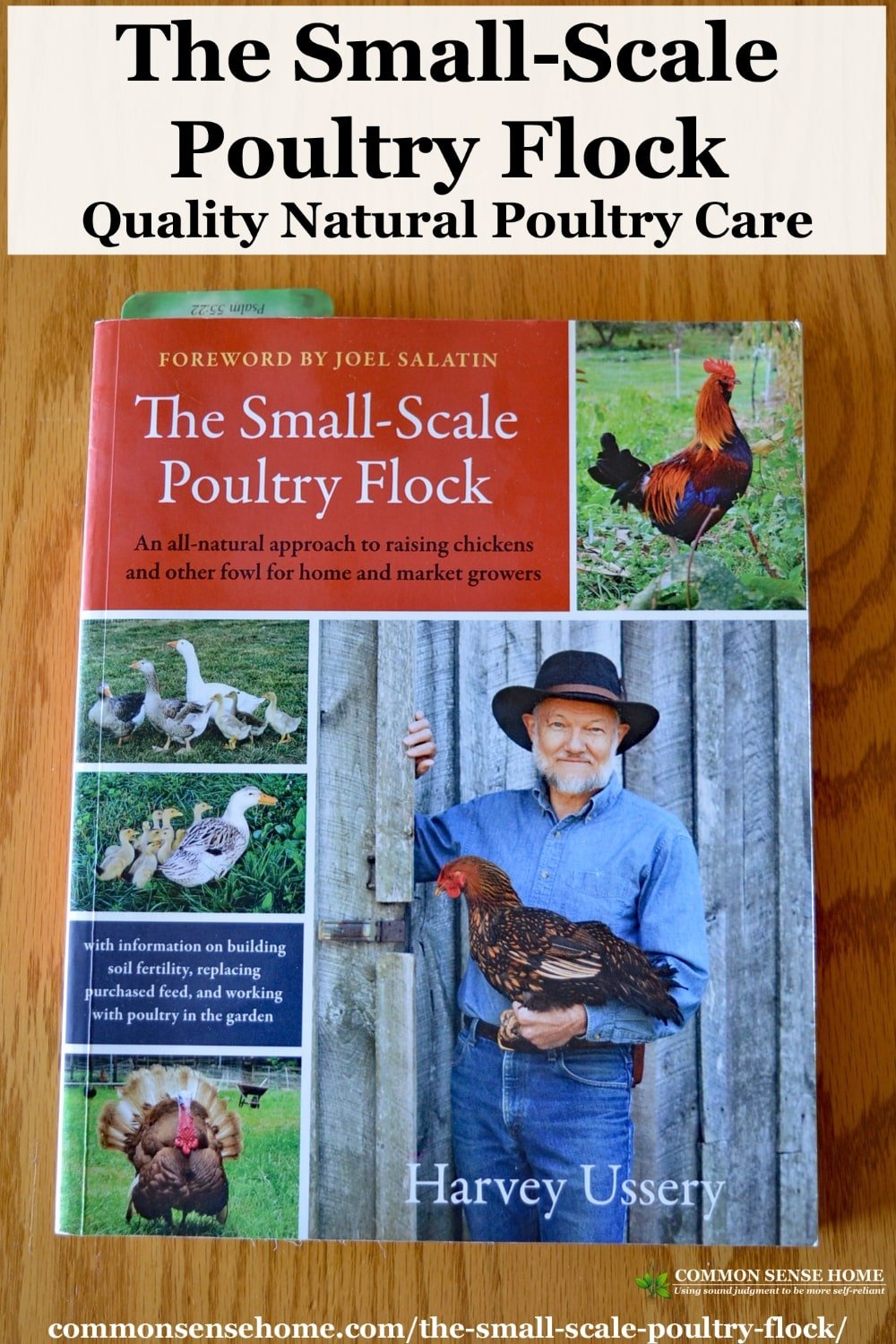The Small-Scale Poultry Flock – Quality Natural Poultry Care
I recently had the pleasure of reading “The Small-Scale Poultry Flock – An all natural approach to raising chickens and other fowl for home and market growers” by Harvey Ussery. This book is overflowing with detailed information on every aspect of natural poultry care. It's a worthwhile investment for new poultry people and experienced growers alike. This is not a “pet chicken” book, but a practical manual grounded in decades of experience.

The aspect of the book that I found most appealing is Harvey's commitment to quality – flock quality of life, quality of food produced and quality of the environment impacted by the flock. No more chicken yards that look like dead lunar landscapes. You'll find practical flock information instead of “coop decor”. There's no squeamishness about culling birds when needed to ensure a healthy, productive flock. The Small -Scale Poultry Flock takes your chooks from egg to table with care and attention to detail.
What's Covered in The Small-Scale Poultry Flock?
The Small-Scale Poultry Flock is broken into seven sections plus appendices, as follows:
- Getting Started
- Basic Care
- Working Partners
- Feeding the Small-Scale Flock
- Other Management Issues
- Breeding the Small-Scale Flock
- Poultry for the Table
There are full color photos, charts, diagrams – even spreadsheets with formulas for feed calculations. Chicken (and poultry) poop is treated as a resource, not a waste, increasing garden fertility. (Our chickens love their deep litter. It's so much nicer than the poop matted straw I remember in my mom's chicken coop.)
Harvey also recommends additional resources for more information on sourcing chicken breeds, soil health, food and sustainability. (This got me reading The Resilient Gardener, which I'll be reviewing soon.)
One of the most valuable aspects of the text is troubleshooting common mistakes. So many resources on the internet are written by people who haven't done what they are writing about. Harvey's tried many different poultry and gardening techniques over the years – and made his share of mistakes. He shares the good and the bad of poultry keeping, so you can learn from his experience.
Why Raise Your Own Poultry and Eggs?
Each section covers not just the “how”, but the “why”. As many flocksters (Harvey's term for poultry owners) will tell you, it's not usual for your home raised chicken or eggs to be more expensive than what's available on store shelves. So why even bother raising your own?
I was raised on a small dairy farm, and I now live in farm country. The changes I've seen in the farm landscape around me are appalling. When I was a kid, it was the tail end of the life of small, diversified farms. Ag Secretary Earl Butz's 1973 call for farmers to “get big or get out” was one of many factors that dramatically changed agriculture – to my mind, not for the better.
Farming isn't farming any more – it's agribusiness. “Animal husbandry” is now “animal science”. Manure spreading is now “nutrient management” – and that “nutrient management” is polluting the majority of wells in my county. (Over 60% of 4,896 private wells tested positive for fecal microbes last year.) We're dealing with dairy CAFOs (confined animal feeding operations) here, but I know other areas are having similar problems with pig and chicken wastes. The article “This Meat Company Dumps More Pollution Into Waterways Each Year Than ExxonMobil” talks about how Tyson Foods dumps millions of pounds of animal waste per year. Human waste has to go to a treatment plant. Animal waste doesn't.
I can't get rid of CAFOs, but I can support small local producers, and I can keep a small poultry flock for meat and eggs. This year we raised broiler chickens for meat and ducks for pest control. Next year we may add more. I know that whatever animals we have, they will be well cared for and their poop won’t pollute the water.

Some of My Favorite Bits from The Small-Scale Poultry Flock
There are so many useful pieces of information in this book that it's tough to pick only a few, but these are some of my favorites;
Detailed chicken anatomy diagrams, inside and out – Back on the farm, I didn't pay much attention to specific chicken parts. Now, choices for chicken care and diet come from a better understanding of the critter itself.
Full glossary – If you want to talk chicken, it helps to know the right terms to use.
Full color photos – Baby chicks are adorable, but seeing coop options in photo format instead of just descriptions makes it much easier to brainstorm for poultry housing to add to our homestead.
Mixing and growing your own feeds – This is one area I want to focus on as we expand our flock. There's not a lot of demand here for organic poultry feed, so I ran into trouble with finding it in stock. Even when I special ordered feed, it didn't always come in on time. Some of the options Harvey uses won't work in our colder climate, but I still have plenty of choices for experimentation.
Working with the Flock in the Garden – This year we used the ducks for garden pest control. Moving forward, I want to work more with chickens and cover crops. Mom's focus back on the farm was keeping the poultry flock out of the garden, so this is a new experience for me. (And one that I'm enjoying. Pulling weeds and hunting slugs is much more fun with ducky companions.)
Small-Scale Poultry Done Right
The Small-Scale Poultry Flock is a book I know I'll use. Reading Harvey's writing is like sitting down with an old friend who knows a helluva lot more about poultry than I do. I'm hoping that he does an updated version or follow up text, as I've seen in online forums that he's now started raising Icelandic chickens for their superior survival traits.
As I have said many times, you don't have to do everything, but I encourage everyone to do something to increase their self-reliance. If poultry is your “something”, The Small-Scale Poultry Flock is a solid resource to help you out.

You may also find useful:
- 7 Best Tips for First Time Chicken Owners
- Homestead Geese – Easy to Care for Barnyard Protectors and Weed Eaters
- Quick Lock Chicken Door


I have tried the Rhubarb Pudding cake and am wondering if you have ever used apples instead of rhubarb? With the fall and having a lot of apples wondering if it would get the same consistence?
Diana
I haven’t used apples for the pudding cake since my crowd loves apple crisp, but I don’t see why it wouldn’t work. I’d probably cut back on the sugar a little and add a teaspoon of cinnamon (or whatever spices you like with your apples) and a tablespoon or two of lemon juice for a bit of acidity.